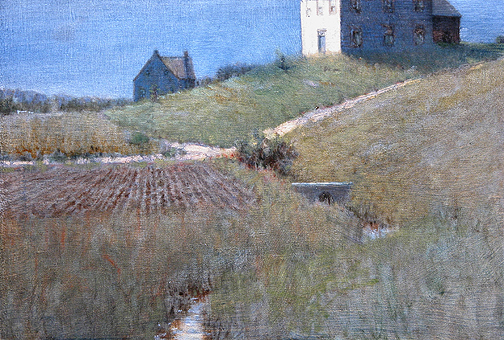Here's another step in the process. I don't think that many readers are engaged with this, considering that the readership is down. Nonetheless, first is a detail of the sky. All the paint is transparent. Notice how the canvas weave makes the blue sparkle. In most paintings, I paint an opaque sky, but in moonlight I often leave the sky as veils of transparent color. I think it heightens the contrast between the ethereal and the material.
The next three are the last couple of days, and the fourth is the state as of this evening.
As you can see, it's gotten a good deal darker, and more saturated. You can also see that I'm avoiding the lit side of the house, though I did change it's value and color somewhat.
By the way, I think I'm such a fan of moonlight because one of the very earliest images I can remember is an N. C. Wyeth illustration from Treasure Island, featuring Blind Pew making his way down the road from the Admiral Benbow Inn.
























































